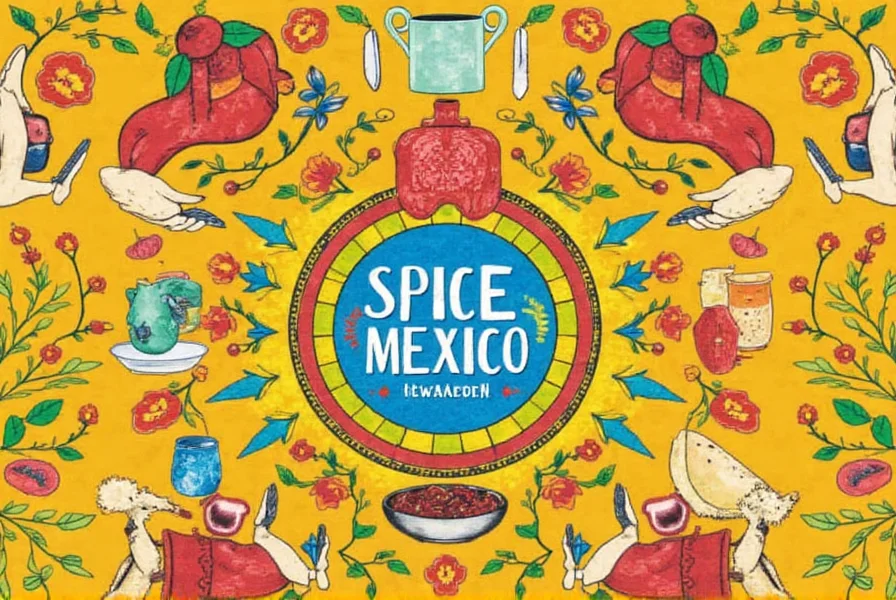Oregano comes in several varieties, each with unique flavors and uses. Sweet oregano is mild and versatile for pizza and sauces, wild oregano is strong for stews, Mexican oregano is citrusy for Southwestern dishes, Italian oregano is earthy for tomato-based recipes, and Greek oregano is robust for Mediterranean cuisine. Understanding these differences helps you choose the right type for your dish, maximizing flavor and authenticity.
Table of Contents
The Different Types of Oregano
Let's dive into the most common types of oregano and what makes each of them special:
1. Sweet Oregano (Origanum vulgare)
This is the most commonly used type of oregano in Mediterranean cuisine. It has a mild, slightly sweet flavor with hints of mint and thyme. Sweet oregano is perfect for pizza, tomato sauces, and grilled meats. Its versatility makes it a staple in many kitchens.

2. Wild Oregano (Origanum vulgare ssp. hirtum)
Wild oregano is more pungent and aromatic than sweet oregano. It has a stronger, almost peppery flavor, which makes it ideal for heartier dishes like stews, roasted vegetables, and marinades. Some people even use it in herbal remedies due to its strong properties.
3. Mexican Oregano (Lippia graveolens)
Despite its name, Mexican oregano is not a true oregano but rather a member of the verbena family. It has a citrusy, slightly bitter taste and is commonly used in Mexican and Southwestern cuisines. Think of it as the zesty counterpart to the traditional oregano.

4. Italian Oregano (Origanum onites)
Italian oregano is often confused with sweet oregano, but it actually has a more intense, earthy flavor. It's great for adding depth to tomato-based dishes, soups, and meatloaf. It also pairs well with garlic and olive oil.
5. Greek Oregano (Origanum heracleoticum)
Greek oregano is known for its robust, slightly bitter flavor and strong aroma. It's a key ingredient in Greek salads, lamb dishes, and baked goods. It's also popular in the Middle East and North Africa.
A Comparison Table of Popular Oregano Varieties
| Type of Oregano | Flavor Profile | Best Uses | Origin |
|---|---|---|---|
| Sweet Oregano | Mild, slightly sweet, with hints of mint and thyme | Pizza, tomato sauces, grilled meats | Mediterranean |
| Wild Oregano | Strong, peppery, and aromatic | Stews, roasted vegetables, marinades | Eastern Europe |
| Mexican Oregano | Citrusy, slightly bitter | Mexican and Southwestern dishes, salsas | Mexico |
| Italian Oregano | Earthy, intense, with a hint of bitterness | Tomato-based dishes, soups, meatloaf | Italy |
| Greek Oregano | Robust, slightly bitter, and aromatic | Greek salads, lamb, baked goods | Greece |
Practical Tips for Using and Storing Oregano
Now that you know the different types of oregano, here are some tips to get the most out of them:
- Use fresh oregano for maximum flavor. Fresh oregano has a brighter, more vibrant taste than dried. Chop it finely before adding it to your dishes.
- Dried oregano is great for long-cooking recipes. Dried oregano holds up better in sauces, soups, and stews. Use it sparingly—its flavor is quite strong.
- Store oregano properly. Keep dried oregano in an airtight container away from heat and light. Fresh oregano should be stored in the fridge, wrapped in a damp paper towel.
- Pair oregano with other herbs. Oregano goes well with basil, thyme, rosemary, and marjoram. Try mixing them in your next dish for extra depth.
- Don't overdo it. Oregano is powerful, so a little goes a long way. Start with a small amount and adjust to taste.
Frequently Asked Questions About Oregano
What's the main difference between sweet oregano and Greek oregano?
Sweet oregano (Origanum vulgare) has a milder, more delicate flavor with subtle mint and thyme notes, making it versatile for everyday cooking. Greek oregano (Origanum heracleoticum) has a stronger, more robust and slightly bitter flavor profile that stands up well to bold Mediterranean dishes, especially those featuring lamb or tomatoes. Greek oregano is generally considered more intense and aromatic than its sweet counterpart.
Can I substitute Mexican oregano for Mediterranean oregano in recipes?
Yes, but with caution. Mexican oregano (Lippia graveolens) has a distinctly citrusy, slightly medicinal flavor compared to the earthier Mediterranean varieties. It works well as a substitute in Mexican and Southwestern dishes where its citrus notes complement chili and cumin flavors. However, for Italian or Greek dishes, the substitution might create an unexpected flavor profile. If substituting, use about half the amount of Mexican oregano since it's more potent.
Is wild oregano significantly stronger than regular oregano?
Yes, wild oregano (Origanum vulgare ssp. hirtum) is noticeably stronger and more pungent than cultivated sweet oregano. It contains higher concentrations of essential oils, giving it a more intense, almost peppery flavor. When using wild oregano, start with about half the amount you would use of regular oregano and adjust to taste. Its potency also makes it popular for medicinal uses, though culinary applications should focus on its flavor-enhancing properties.
What type of oregano is best for pizza and Italian dishes?
For authentic Italian flavors, Italian oregano (Origanum onites) is ideal due to its earthy, intense profile that complements tomato-based sauces. Sweet oregano also works well for a milder flavor. Many professional pizzaiolos prefer a combination of both—using sweet oregano in the sauce and a sprinkle of dried Greek or Italian oregano on top before baking. If using fresh oregano, add it toward the end of cooking to preserve its delicate flavor.
How long does dried oregano stay fresh, and how should I store it?
Properly stored dried oregano maintains its best flavor for 1-2 years. Store it in an airtight container away from heat, moisture, and direct sunlight. A dark cupboard is ideal. To test if your oregano is still potent, rub a small amount between your fingers—if you can't smell a strong, pleasant aroma, it's time to replace it. Fresh oregano lasts about 1-2 weeks in the refrigerator when wrapped in a damp paper towel and placed in a plastic bag.
Can I grow multiple oregano varieties in my garden?
Absolutely! Oregano is relatively easy to grow and many varieties thrive in similar conditions. Plant them in well-draining soil with full sun exposure. Space different varieties at least 12 inches apart to prevent cross-pollination (though this won't affect flavor). Mediterranean oreganos prefer drier conditions, while Mexican oregano does better with slightly more moisture. All varieties benefit from occasional trimming to encourage bushier growth.
What are the health benefits of oregano?
Oregano contains powerful antioxidants and has antimicrobial properties. It's rich in rosmarinic acid and thymol, which have anti-inflammatory effects. Oregano is also a good source of vitamin K, iron, and manganese. While it won't replace medical treatment, regularly incorporating oregano into your cooking may support overall health. Wild oregano typically contains higher concentrations of beneficial compounds than cultivated varieties.
Why does my oregano taste bitter, and how can I prevent this?
Bitterness in oregano can result from several factors: overcooking (especially fresh oregano), using too much, or harvesting at the wrong time. Oregano contains volatile oils that can become bitter when exposed to high heat for too long. To prevent bitterness: add fresh oregano toward the end of cooking, use dried oregano sparingly (remember it's more concentrated), and harvest oregano just before it flowers when the flavor is most balanced. If your dish turns out bitter, a small pinch of sugar can help counteract the bitterness.
Conclusion: Embrace the Oregano Diversity
Oregano may seem simple, but it's a complex and versatile herb with many faces. From the sweet and mellow sweet oregano to the bold and peppery wild oregano, each variety brings something unique to the table. By understanding the different types of oregano and how to use them, you can elevate your cooking and unlock new flavor profiles in your favorite dishes. So next time you reach for oregano, take a moment to consider which type best suits your recipe—and maybe even experiment with a few varieties to see what happens!










 浙公网安备
33010002000092号
浙公网安备
33010002000092号 浙B2-20120091-4
浙B2-20120091-4